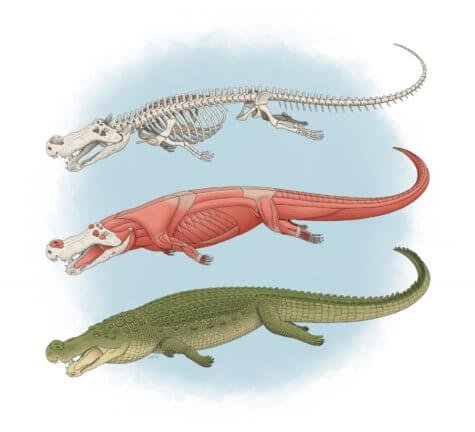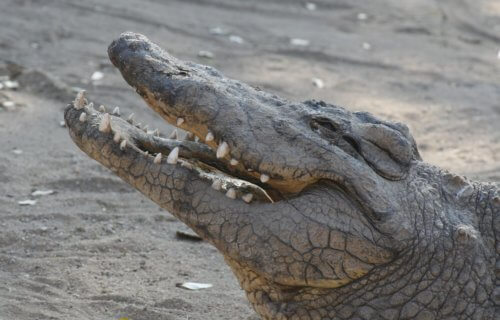JONESBORO, Ark. — Scientists call it Deinosuchus, meaning “the terror crocodile.” It’s something you’d expect to see in “Jurassic Park,” but did it really exist millions of years ago? A new study reveals there wasn’t just one species of giant crocodiles running around in ancient North America, but three! Researchers have discovered fossils showing these prehistoric predators ate dinosaurs for lunch with teeth as large as bananas.
The study in the Journal of Vertebrate Paleontology looks at new Deinosuchus samples in the present day United States. Growing to be 33 feet long, scientists believe this beast is one of the largest crocodylian species to ever exist.
Now, paleontologists say these three distinct breeds of terror crocs lived all across North America between 75 and 82 million years ago. During this time, the continent was actually split in two by a shallow sea stretching from the Arctic Ocean to the Gulf of Mexico. Researchers say two species, Deinosuchus hatcheri and Deinosuchus riograndensis, lived in the west from Montana to northern Mexico. The other species, Deinosuchus schwimmeri, was an east coast terror roaming from New Jersey to Mississippi.
Dinosaur slayer?

From bite marks discovered on other fossils, the research team makes the case this beast was the biggest predator in its ecosystem. Using gigantic teeth, it likely feasted on its dinosaur neighbors.
“Deinosuchus was a giant that must have terrorized dinosaurs that came to the water’s edge to drink,” says Dr. Adam Cossette in a media release. “Until now, the complete animal was unknown. These new specimens we’ve examined reveal a bizarre, monstrous predator with teeth the size of bananas.”
Cossette works at the New York Institute of Technology College of Osteopathic Medicine at Arkansas State University. The scientist adds this beast also likely dined on any creature that got in its way, even crushing turtles with its jaw.
‘It was a strange animal’
Study authors say, although its name means terror crocodile, it more closely relates to alligators. Interestingly, Deinosuchus fossils have an enormous skull with a snout that is long, broad, and inflated around the nose. This feature doesn’t appear in any other crocodylian species in history, past or present, and its purpose is still unknown.
“It was a strange animal,” explains Professor Christopher Brochu from the University of Iowa. “It shows that crocodylians are not ‘living fossils’ that haven’t changed since the age of dinosaurs. They’ve evolved just as dynamically as any other group.”
Mysterious disappearance
Just like the mystery of their giant noses, scientists are also trying to solve why the animals died out in the Mesozoic Era. The study finds Deinosuchus disappear from history before the mass extinction event which ended the age of dinosaurs.
With new samples clearing up some of the mysteries surrounding this ancient predator, Cossette says more work still needs to be done to find out what happened to the terror croc.
“These holes are unique to Deinosuchus and we do not know what they were for,” the researcher says regarding the Deinosuchus nose. “Further research down the line will hopefully help us unpick this mystery and we can learn further about this incredible creature.”
Like studies? Follow us on Facebook!
